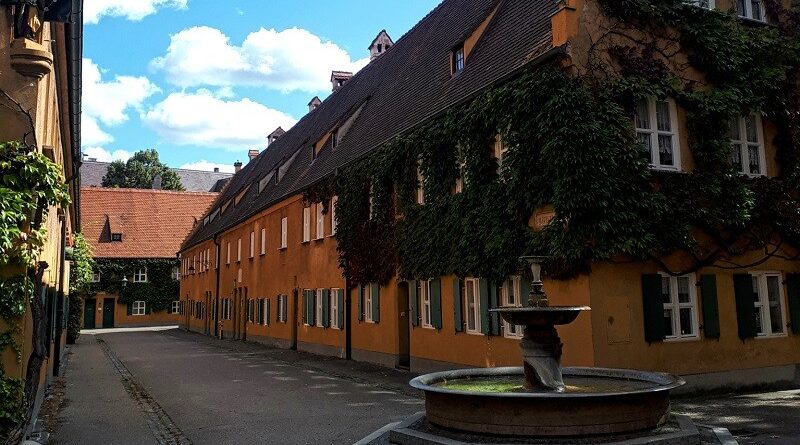Augsburg: A Short Guide to the City of Rags and Riches
In this destination guide we visit the sights of Augsburg such as the city’s richly decorated churches and palaces as well as the Fuggerei, the world’s oldest social housing complex.
Trip to Augsburg
Of all my recent visits to destinations across Germany, it was perhaps Augsburg which stood out most.
Augsburg is not only a beautiful and extremely pleasant city to explore, but also has some highly interesting sights connected to its long history as one of the most important cities in Central Europe.
Its history is a tale of extreme riches, as Augsburg’s Fugger family was one of the wealthiest the world has ever seen.
With the wealth of the Fuggers, some beautiful buildings and even entire empires like the Austrian Habsburgs were funded.
However, what makes the story so unique is that Jakob Fugger, arguably Augsburg’s most famous son, also used his money for noble causes.
The prime example of this is the Fuggerei in Augsburg, which was the world’s first social housing complex and still makes for a highly interesting sight to see.
Let’s find out more about it all in our little Augsburg guide and trip report!

Getting to Augsburg
Augsburg is located in the German state of Bavaria (Bayern) some 65 kilometres to the north-west of the state capital of Munich.
The city is best reached by train, bus or car from Munich, which is also the location of the nearest airport.
Augsburg is a stop on the Munich-Ulm-Stuttgart railway line, and also has good train connections to other important tourist destinations in Bavaria such as Nuremberg and Füssen (for Neuschwanstein Castle).
I visited Augsburg as a day trip by train from Munich.
Normally this is a rather short and uneventful journey if it wouldn’t have been for hundreds of Kaiserslautern football fans arriving at Munich’s main railway station for a match against TSV 1860 München at the moment I was about to depart from the adjacent platform.



First impressions of Augsburg
Once in Augsburg the situation was however much more calm.
From Augsburg’s centrally located railway station, it’s only a 10-minute walk to the city centre where all the main sights are located.
On my way to the city centre I happened to walk across the Stadtmarket, the main open-air market in the city centre of Augsburg.
Apart from the many market stalls selling fruits and vegetables and other food products, you can find a couple of appealing bars and cafés in this area.
Despite the early hour of the day, the place was abuzz with people enjoying a drink or some food and this lively city vibe certainly remained one of my main impressions of Augsburg throughout the rest of my visit.

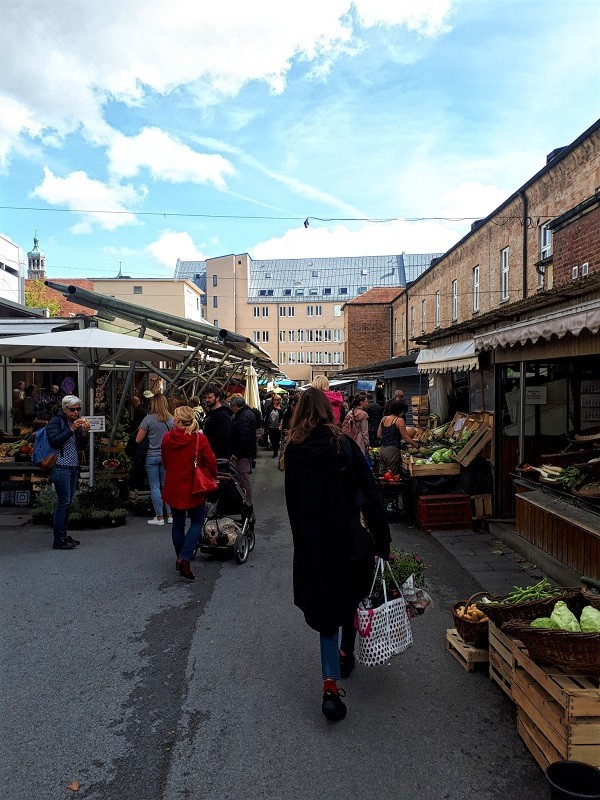
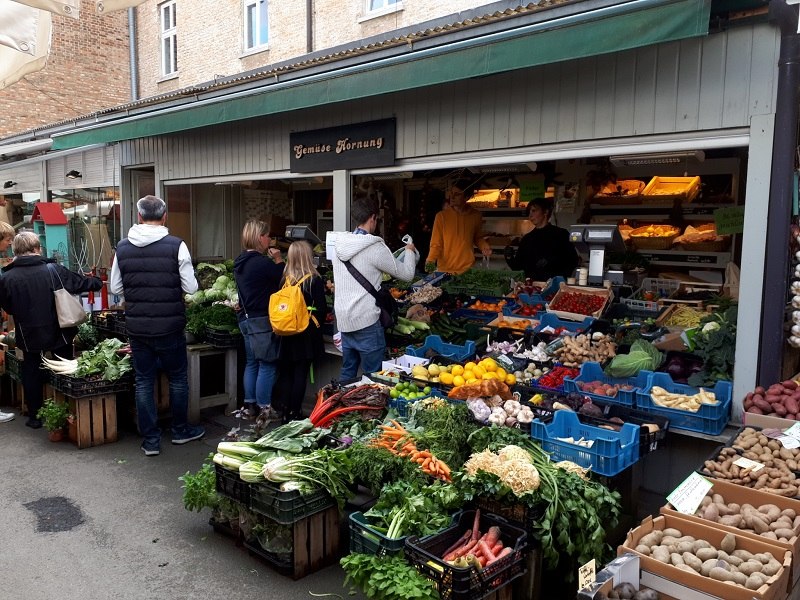
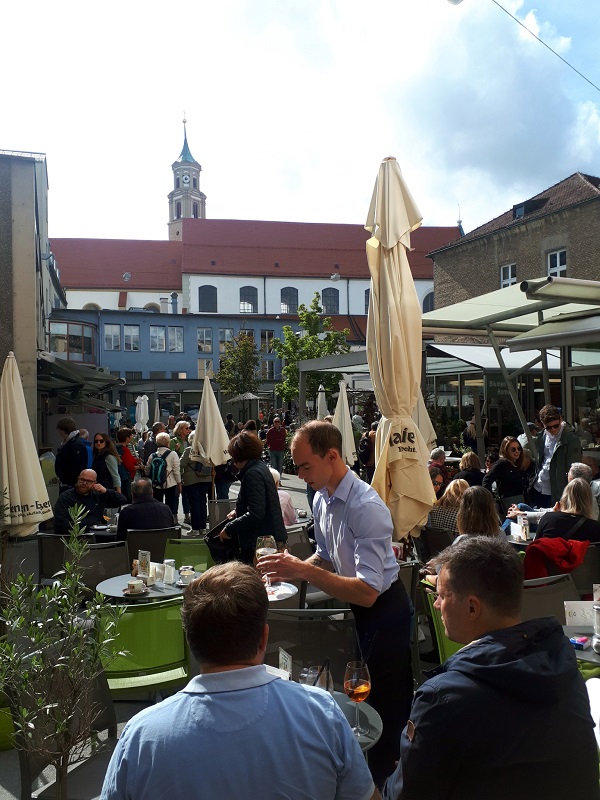
Central square
The cobblestoned Rathausplatz (City Hall Square) is the beating heart of Augsburg.
The square is dominated by the magnificent 17th century Town Hall.
Built in Renaissance style, the Town Hall with its twin towers and the double-headed imperial eagle of the Holy Roman Empire adorning its façade is one of Augsburg’s most striking buildings.
On top of the town hall you can see a large pine cone made out of copper.
This pine cone happens to be Augsburg’s symbol and is therefore also visible on the city’s flag and coat of arms.
This beautiful square is surrounded by a couple of other fine historic buildings such as the 10th century Perlach Tower, a 70-meter-tall watch tower.




City centre streets
From the Town Hall, it’s easy enough to explore the picturesque streets and squares in the city centre as no matter in which direction you walk you will come across something interesting.
At the nearby Moritzplatz, you can find the St. Moritz Church and the Weberhause (Weavers’ House), the former Guild House of the local weavers in Augsburg with a highly distinctive painted façade.

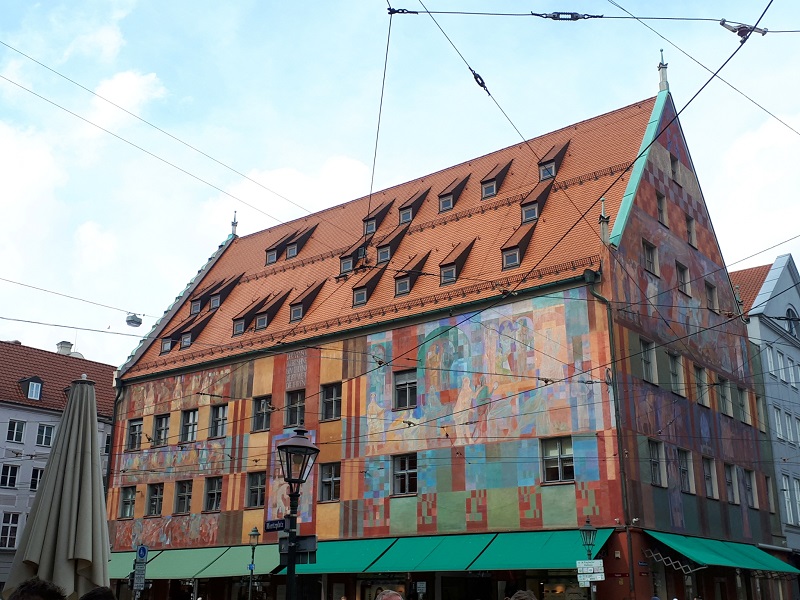
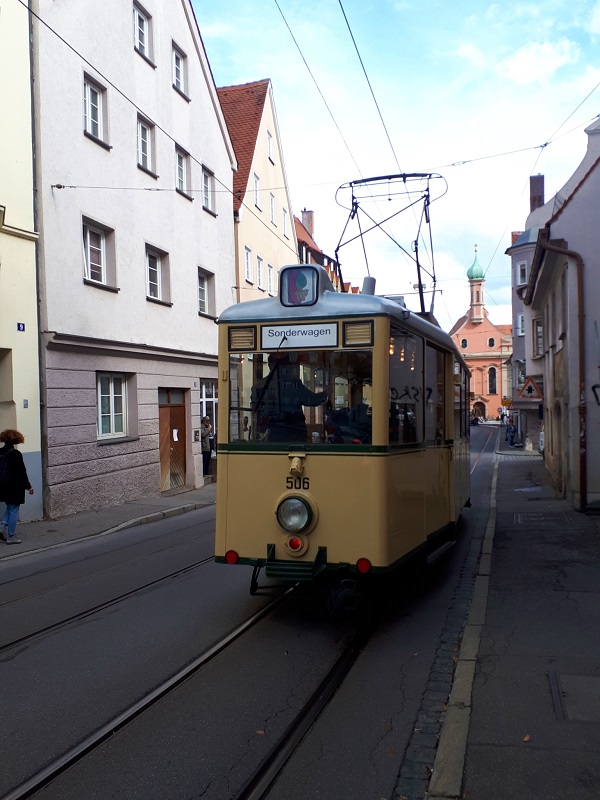
Fugger palace
Walking further south from Moritzplatz through the Maximilianstrasse (Maximilian Street), you will pass along two of the main city palaces in Augsburg.
The first one you will pass by is the Fuggerstadtpalast or the Fugger City Palace, which is actually more of a complex of houses for all the Fugger family members.
Although they aren’t that well-known outside of Germany, the Fuggers were one of the wealthiest families ever in world history as they amassed a vast fortune with their banking and trade business.
The wealth of Jakob Fugger at his death in the year 1525 was estimated to be around 2% of the GDP of the entire continent of Europe.
When you adjust his wealth for inflation, Jakob Fugger was good for a personal net worth of $400 billion, which is well-above the fortune of better known industrialists and businessmen in the Anglo-Saxon world like John D. Rockefeller and Andrew Carnegie.
Just south of the Fugger houses you can find the Schaezlerpalais, a fine baroque palace.

Imperial abbey
If you walk even further south, you come across the Saint Ulrich’s and Saint Afra’s Abbey.
This was one of the many imperial abbeys of the Holy Roman Empire, which were quite unique as they all had sovereign rule over their own lands, being answerable only to the Holy Roman Emperor himself.
The territory over which this Benedictine Abbey ruled was basically a patchwork of lands located both inside the city of Augsburg and in the wider region on which some 5,000 people lived in total.
It’s one of the examples of why the Holy Roman Empire with its highly complicated political structure was one of the most interesting states in European history (check out the fun video about it below!).
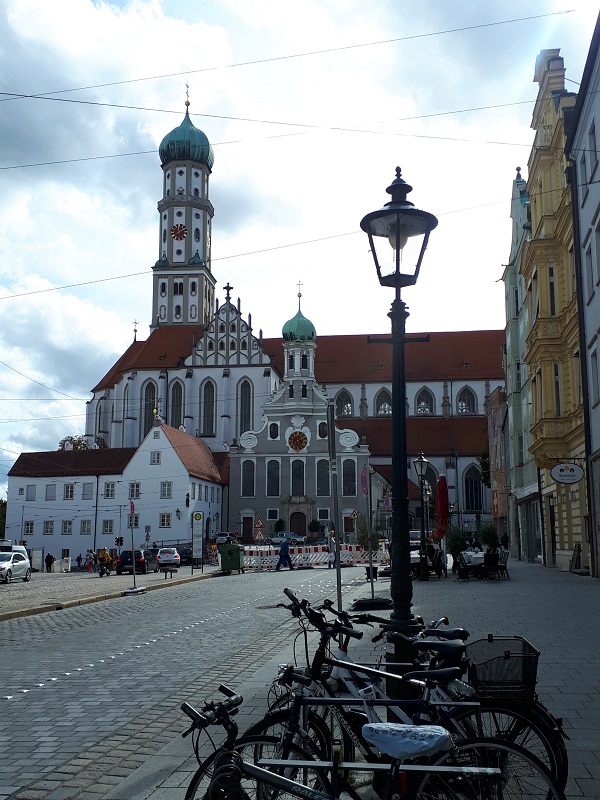

Augsburg Cathedral
Located just to the north of Town Hall Square you can find the Augsburger Dom (Augsburg Cathedral), the city’s main church.
This 11th century church was built in Romanesque style with a couple of Gothic-style additions which were added three centuries later.



Fuggerei
Of all the sights in Augsburg, the Fuggerei is arguably the most interesting one to visit given how unique it is.
Founded by Jakob Fugger in 1516, the Fuggerei was the world’s first social housing complex in which poor and needy Augsburg citizens could get their own subsidised house.
However, before they were allowed to live here, people first needed to fulfil certain criteria.
In order to live in the Fuggerei, people had to live in Augsburg for at least two years, be Catholic and needy without being indebted.
They also had to get a part time job in the community, say three daily prayers and follow a curfew.
As the Fuggerei was a walled enclave, its entrance gates would be locked at night until the next morning.
In return, the Augsburg poor could get a house in the Fuggerei for a total monthly rent of just one single Rhenisch guilder per year, which equals just be 88 euro cents (€0.88) in today’s money.
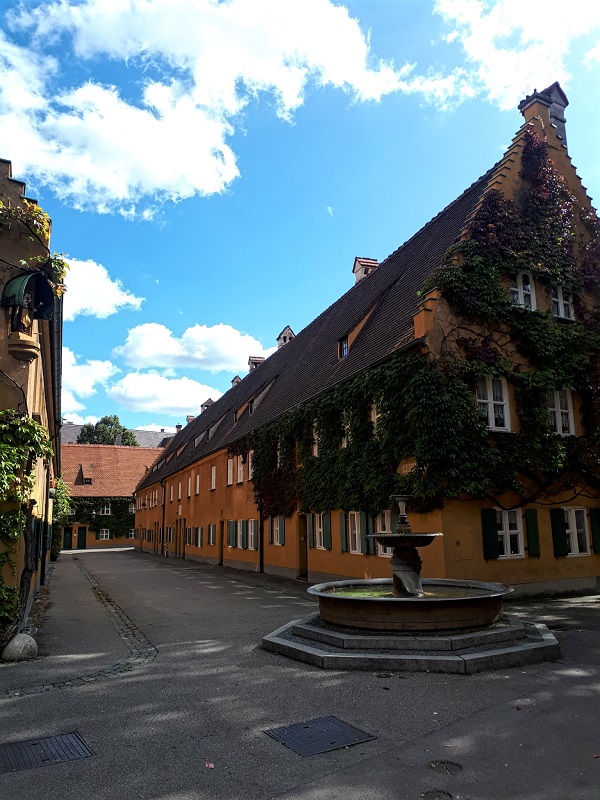
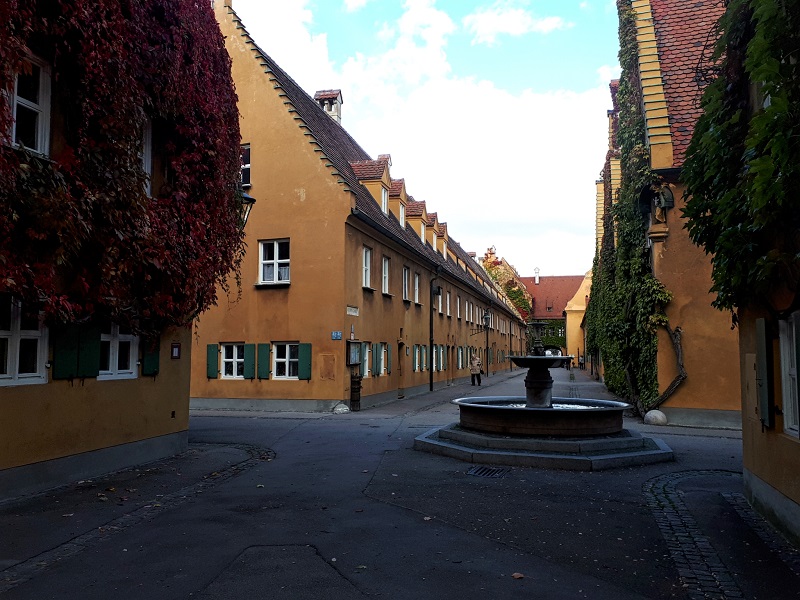
Visiting the Fuggerei
Nowadays, half of the Augsburg Fuggerei is still functioning as a social housing complex, while the other half of the houses are designated as a museum which you can visit.
Inside the houses which are open for visitors you can learn more about the unique history behind this social housing complex.
You can also see the house interiors of different eras throughout time, from the time of the Jakob Fugger all the way to modern-day Germany.
The people who nowadays live in the Fuggerei pay slightly more in rent than those who lived here in the 16th century, as besides the rental sum of €0.88 a year they now need to pay around €250 a month in extra costs.
Although the curfew is no longer in place, the other criteria still count as the Fuggerei is still only open towards needy Catholic inhabitants of Augsburg.
As the exhibits, furniture and interiors are well-presented (with informative texts and multimedia in both German and English), the Fuggerei really is an unique living museum and a must-visit when you find yourself in Augsburg.




Other Augsburg sights
Augsburg is home to several more sights, museums, parks and a botanical garden which could be worth visiting depending on your personal preferences.
As my time in the city was limited, I however preferred to walk around the city centre a bit more to soak up the pleasant vibe of Augsburg.
Especially the area directly to the east of Augsburg’s old town centre is nice to explore as several small streams run along and underneath the streets.
Being a Bavarian city, you can for sure count on Augsburg of having several beer gardens, bars, pubs and quality restaurants to laze away the day.


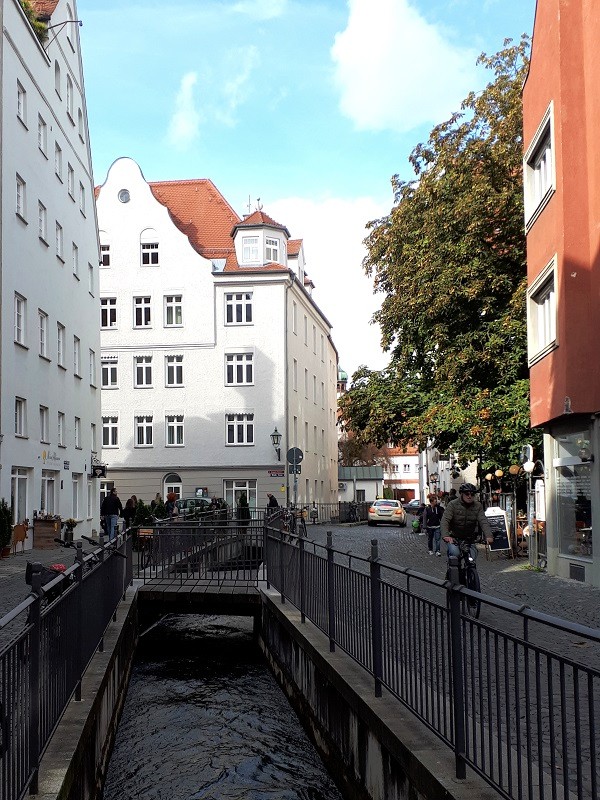


Conclusion
My visit to Augsburg was a pleasant surprise as I absolutely loved its beautiful old town, pleasant vibe and interesting sights.
Especially the Fuggerei made for an intriguing visit and is highly recommended given how representative it is for Augsburg as a city of immense historic wealth as well as poverty.
Although I only visited Augsburg on a day trip from Munich, I certainly could imagine staying two full days and nights in this pleasant German city to see more of the sights it has to offer.
Explore some other destinations with us!
In our trip report section, we have written multiple reports of holidays across the world which can serve as an inspiration for your next trip. These trip reports include destination guides as well as reviews of hotels, airlines and other modes of transport.
Our last two featured articles highlighted the D-Day sights of Normandy and Poland’s Hel Peninsula.
Make sure you subscribe to our Twitter, Facebook, and Instagram pages in order to receive instant Paliparan updates when a new article or flight deal is out!

